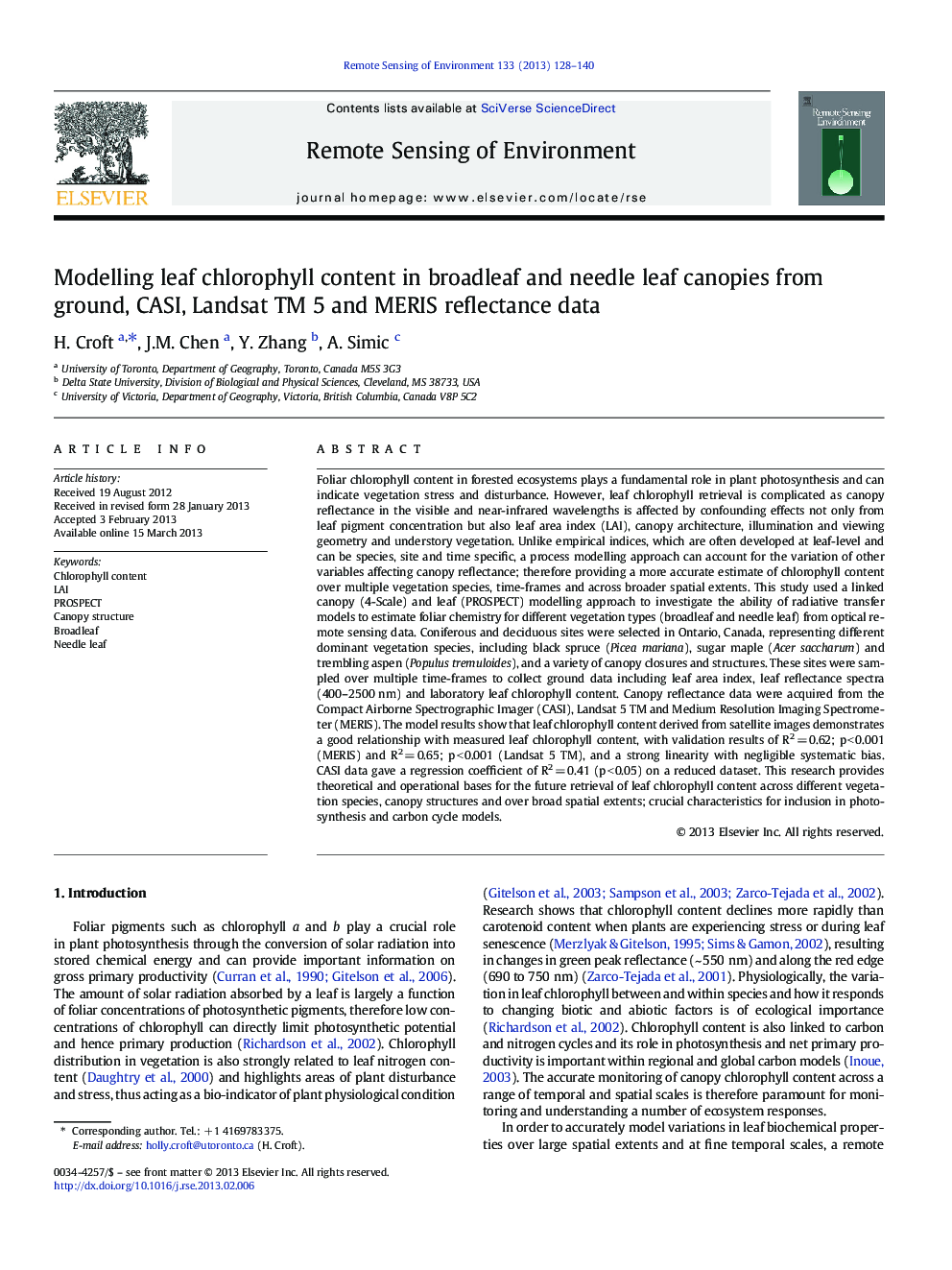| Article ID | Journal | Published Year | Pages | File Type |
|---|---|---|---|---|
| 4458941 | Remote Sensing of Environment | 2013 | 13 Pages |
Foliar chlorophyll content in forested ecosystems plays a fundamental role in plant photosynthesis and can indicate vegetation stress and disturbance. However, leaf chlorophyll retrieval is complicated as canopy reflectance in the visible and near-infrared wavelengths is affected by confounding effects not only from leaf pigment concentration but also leaf area index (LAI), canopy architecture, illumination and viewing geometry and understory vegetation. Unlike empirical indices, which are often developed at leaf-level and can be species, site and time specific, a process modelling approach can account for the variation of other variables affecting canopy reflectance; therefore providing a more accurate estimate of chlorophyll content over multiple vegetation species, time-frames and across broader spatial extents. This study used a linked canopy (4-Scale) and leaf (PROSPECT) modelling approach to investigate the ability of radiative transfer models to estimate foliar chemistry for different vegetation types (broadleaf and needle leaf) from optical remote sensing data. Coniferous and deciduous sites were selected in Ontario, Canada, representing different dominant vegetation species, including black spruce (Picea mariana), sugar maple (Acer saccharum) and trembling aspen (Populus tremuloides), and a variety of canopy closures and structures. These sites were sampled over multiple time-frames to collect ground data including leaf area index, leaf reflectance spectra (400–2500 nm) and laboratory leaf chlorophyll content. Canopy reflectance data were acquired from the Compact Airborne Spectrographic Imager (CASI), Landsat 5 TM and Medium Resolution Imaging Spectrometer (MERIS). The model results show that leaf chlorophyll content derived from satellite images demonstrates a good relationship with measured leaf chlorophyll content, with validation results of R2 = 0.62; p < 0.001 (MERIS) and R2 = 0.65; p < 0.001 (Landsat 5 TM), and a strong linearity with negligible systematic bias. CASI data gave a regression coefficient of R2 = 0.41 (p < 0.05) on a reduced dataset. This research provides theoretical and operational bases for the future retrieval of leaf chlorophyll content across different vegetation species, canopy structures and over broad spatial extents; crucial characteristics for inclusion in photosynthesis and carbon cycle models.
► Physically-based modelling approach successfully estimates leaf chlorophyll content. ► Modelling approach accounts for differences in leaf and canopy structure. ► Leaf chlorophyll estimates validated at fine and coarse spatial resolution.
